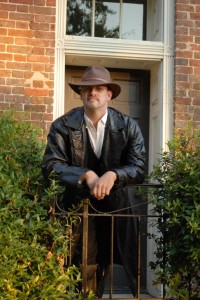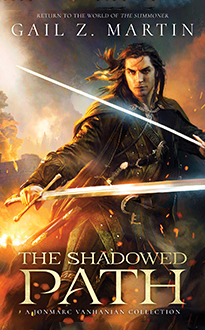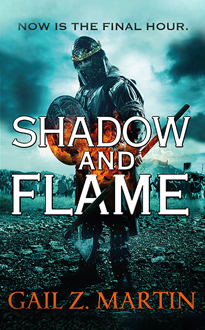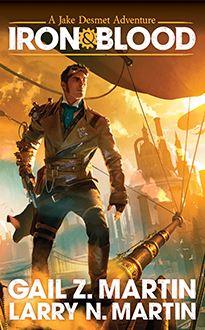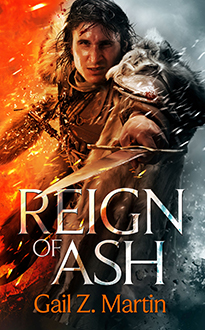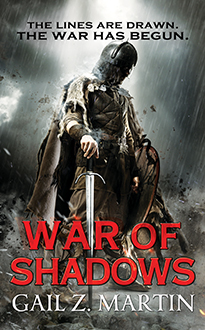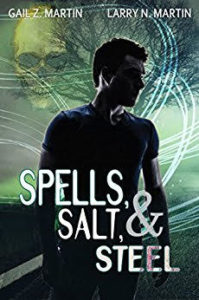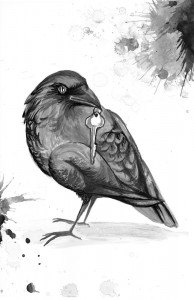 What is the title of your short story? What’s it about? Where can readers find it?
What is the title of your short story? What’s it about? Where can readers find it?
My new short story, Crow Bait and Switch, is part of the Athena’s Daughters, Volume 2 anthology to be published by Silence in the Library Publishing. Athena’s Daughters, Volume 2 is a collection of short works of science fiction, fantasy, and speculative fiction written by women, edited by women, illustrated by women, and about women and girls. The diverse stories, written by very diverse authors, celebrate women and girls of all ages and races, abilities and physical attributes.
Athena’s Daughters, Volume 2 is being funded via Kickstarter. We are at the end of the campaign and we really hope that you will support this fantastic anthology that gives under-represented characters a voice in exciting stories. Our Kickstarter page is here.
What inspired Crow Bait and Switch?
My last published fiction was in Star Wars Gamer over ten years ago with my awesome co-author, Chris Cassidy. Though I have written lots (and lots and lots) of derivative work for 20 years, my last original story was for a writers’ workshop with the late Aaron Allston. Aaron was very much on everyone’s mind at Origins 2014 and, while there, I summoned his positive spirit (and my courage) and participated in a writing seminar with Mike Stackpole and Tim Zahn, who had both been so supportive when I was writing and working with them in Star Wars. Also at Origins, Janine Spendlove, one of the editors of Athena’s Daughters, Volume 2, told me that Silence in the Library Publishing had an open call for short stories for the anthology and encouraged me to submit something.
With this collective encouragement, I began Crow Bait and Switch by dusting off the story I had written for Aaron’s workshop. The USDA Beagle inspector with a nose for maggots and rotten Sicilian cheese became a bossy, genetically engineered Border Collie. In addition to loving dogs and enjoying giving a literal voice to them in my writing, I am also very fond of the family corvidae, to which crows, magpies, and other canny birds belong. I have seen these advanced tool users steal car keys and flashing lights. As such, it was not surprising that, in the tradition of her astonishingly clever forbears, Morgana, the Jurassic Park-quoting, talking crow, flew into Crow Bait and Switch and stole it from everyone else.
Who are your favorite fictional characters—your own, and from other books, TV shows and movies?
Although I have many favorites, across many genres, examples of some of my favorite fictional characters are on display in Crow Bait and Switch. I love talking sentient animals, like the dragons in Temeraire and Dragonriders of Pern, the Looney Tunes Bugs Bunny, the talking dogs in 101 Dalmatians, and the birds and beasts in the Chronicles of Narnia. Science fiction also gives us genetically modified, fully sentient animals in stories like the Planet of the Apes, the Island of Dr. Moreau, and Startide Rising. In Crow Bait and Switch, the animal tricksters of folklore, like Coyote, Reynard, Anansi, and Brer Rabbit, are as much Morgana’s forbears as the velociraptors in Jurassic Park.
With these many favorites and inspirations, what I especially wanted to do in Crow Bait and Switch was to write characters like Morgana, not as a human with feathers, but as a real bird who also happens to be fully sentient. In the story, the main protagonist, Dr. Jesse Harris, will realize that though Morgana speaks like a human, nothing about her is the least bit human. Morgana is a bird, truly alien, and far closer to dinosaurs than to any humans. Morgana will prompt a crisis of conscience that will force Jesse to decide whether she stands with the Pan-Laurasian Fleet or with those who don’t have opposable thumbs.
Thank you again and I hope you’ll support the Athena’s Daughters, Volume 2 Kickstarter!
Listen to a special reading of Crow Bait and Switch on our sister site by clicking here.
* * *
Tish E. Pahl is a principal in a law firm. At her day job, she advises on the federal regulation of drugs, dietary supplements, cosmetics, foods, and medical devices and regularly teaches a crash course in drug law. With Chris Cassidy, Tish wrote for Star Wars, with stories published in the Tales from the New Republic and Star Wars Gamer magazine. Tish is also a prolific producer of derivative genre, fantasy, and science fiction content. She lives in the Washington, D.C. area with her husband, son, and two demanding dogs.







